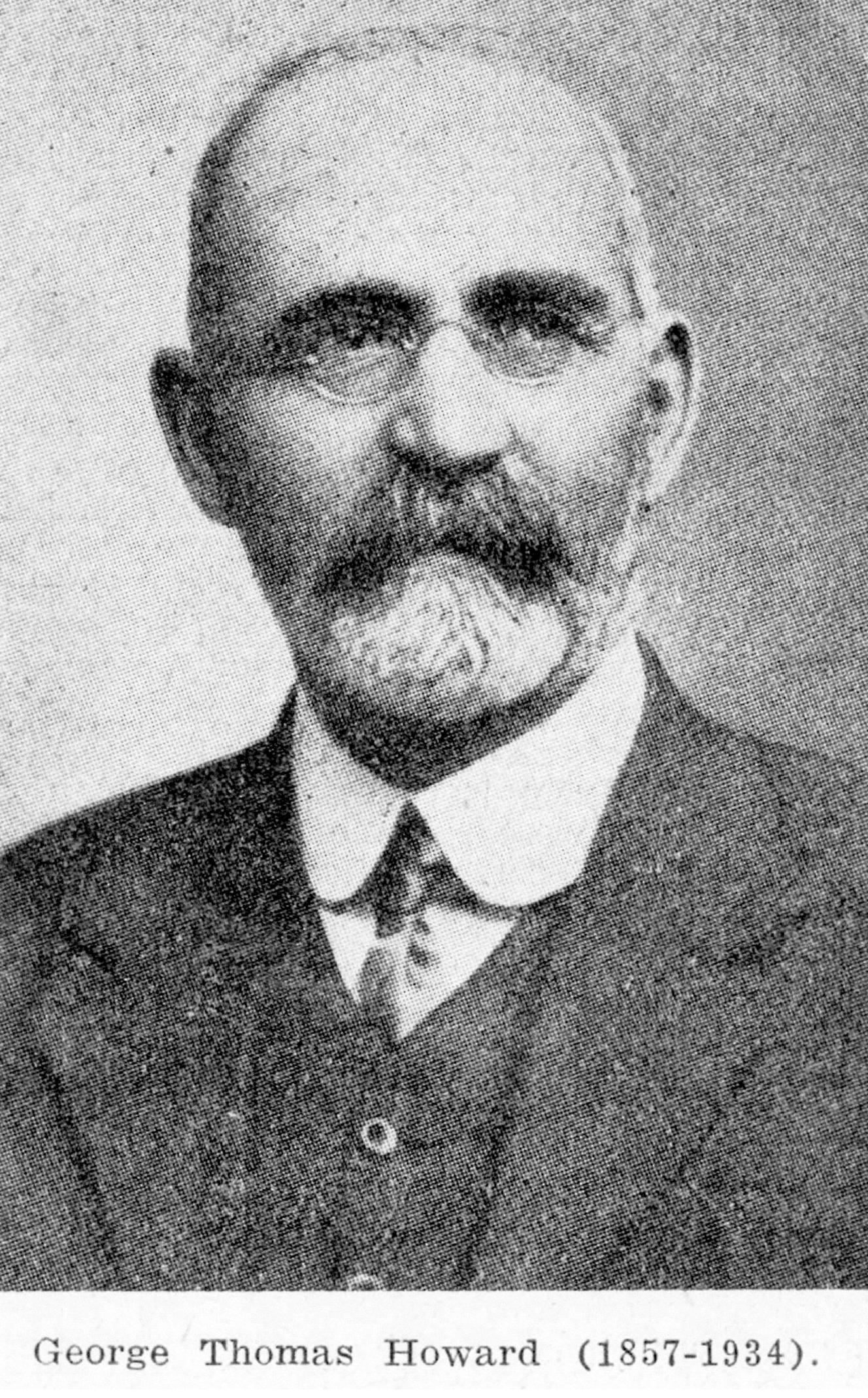 George Thomas Howard was was born at Bendigo (then known as Sandhurst) on October 24, 1856. He was the son of Mr. and Mrs. J. J. Howard, who came to Victoria from Ireland about 1853 and were living at Long Gully when he was born. The Long Gully diggings were approximately one and a half miles from Sandhurst in the Heathcote and Waranga South Division of Sandhurst Mineral District. George obtained his secondary education at the Sandhurst High School and, on leaving school, he became a teacher. He graduated in arts at Melbourne in 1882, but he repeated the doughty performance of Harry Brookes Allen by taking the first and second years of medicine concurrently with the third year of his arts course. He was a member of the committee in 1882 which founded Speculum, the organ of the Medical Students’ Society, and that he was treasurer of the society during the two last years of his course. He obtained the qualifying degrees in medicine and surgery in 1885-1886 along with brilliant stalwarts such as A. L. Kenny, A. J. Wood and J. F. Wilkinson.
George Thomas Howard was was born at Bendigo (then known as Sandhurst) on October 24, 1856. He was the son of Mr. and Mrs. J. J. Howard, who came to Victoria from Ireland about 1853 and were living at Long Gully when he was born. The Long Gully diggings were approximately one and a half miles from Sandhurst in the Heathcote and Waranga South Division of Sandhurst Mineral District. George obtained his secondary education at the Sandhurst High School and, on leaving school, he became a teacher. He graduated in arts at Melbourne in 1882, but he repeated the doughty performance of Harry Brookes Allen by taking the first and second years of medicine concurrently with the third year of his arts course. He was a member of the committee in 1882 which founded Speculum, the organ of the Medical Students’ Society, and that he was treasurer of the society during the two last years of his course. He obtained the qualifying degrees in medicine and surgery in 1885-1886 along with brilliant stalwarts such as A. L. Kenny, A. J. Wood and J. F. Wilkinson.
Howard was then appointed to the resident medical staff of the Melbourne Hospital and remained there until he became Doctor of Medicine in 1888. Then he commenced general practice at Clare House, 226 Nicholson Street, North Fitzroy, and he practised at that address for many years. At first, he was also a demonstrator in the anatomy department of the University. In 1889, however, he was elected by the subscribers to the position of physician to out-patients at his hospital. The Training School for Nurses opened at the Melbourne Hospital in 1891, and George Howard was one of the original lecturers to the trainees. He became a physician to in-patients in 1898 and carried out the important duties of that appointment until he retired in 1916. As a consultant physician he had, at different times, addresses at 131 Collins Street East and 4 Collins Street. He contributed to the professional journals on such subjects as empyema, pulmonary hydatid infestation and hydrotherapy for typhoid fever. In 1914 he was appointed Lecturer in Clinical Medicine at the Melbourne Hospital, and the lectures were of great practical assistance to the students.
Australia was deeply involved in war when Howard retired from the staff of the Melbourne Hospital in 1916. From 1915-18 he acted as Stewart Lecturer in medicine while Maudsley was away.
As an honorary major he was busily engaged in medical work at the 5th Australian General Hospital, Melbourne, and, of course, that work continued until the end of the war. His masonic activities were unbroken; he was greatly respected as a Past Worshipful Master of the University Masonic Lodge. He became a member of the Victorian Historical Society and soon evinced profound interest in the historical details of the early days of Melbourne. He made a deep study of some aspects of our local history prior to the period of his own participation. The Melbourne Hospital Clinical Reports first appeared in 1930. The first number opened with a very brief account of the history of the Melbourne Hospital by George Howard.
Howard always took a keen interest in the training of nurses and in the activities of the medical students. He also served his colleagues well as a committeeman of the Medical Society of Victoria and became President in 1904. He was one of the band who managed the fusion of that society with the local Branch of the British Medical Association at the end of 1906.
George Howard seriously intended to publish a book of medical reminiscences at the time of the centenary of Victorian settlement in 1935. This venture was approved by the Council of the Victorian Branch of the British Medical Association, and some clerical assistance was given to Dr. Howard by Mr. C. Stanton Crouch, the Branch Secretary and Dr Felix Meyer. Dr. Howard died on July 17, 1934, and Dr. Meyer died three years later. They had left their commendable project until they were too old, and it did not reach fruition. Both of these men should be reverently remembered by us all, as they were ornaments of the profession with high achievement and splendid vision.
Last updated 10 April 2025.
Sources: H Boyd Graham, “George Thomas Howard – His medico-historical activities”, MJA, 26/6/1954, p.971.
Article by Dr Allan Mawdsley OAM
